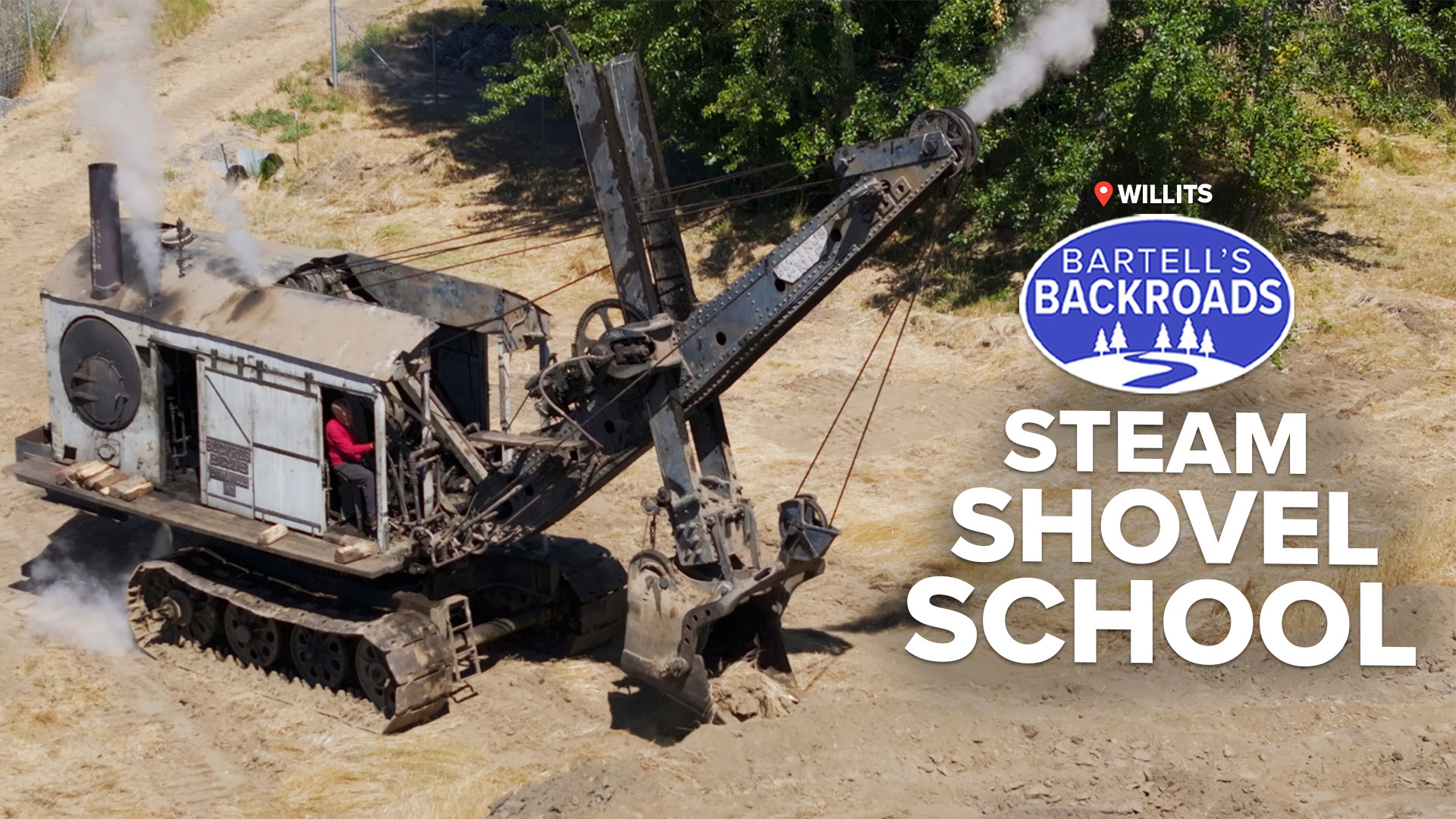WILLITS, Calif. — At the gateway to Mendocino County’s redwood forest, it's not uncommon to see a plume of steam rising above the Roots of Motive Power Museum in Willits. It's one of the few museums putting visitors in the operator’s seat and teaches them how to run antique steam shovels.
Ken McCrary, 73, and Ed Kimball, 19, are the museum’s steam shovel instructors. It takes two instructors because it takes at least two people to operate the 1932 Bucyrus-Erie 50-B steamer.
McCrary and Kimball take turns in the steam shovel’s 100+ degree boiler room while the other runs the shovel outside. Both jobs have their positives and negatives.
“You either sweat running the boiler or eat dust in the operator seat,” said Kimball.
Steam shovels date back to the 1830s and they revolutionized construction. They were crucial when digging the Panama Canal and also helped building California’s levees and bridges.
“This particular machine built Treasure Island,” said Kimball.
Treasure Island in the San Francisco Bay is a manmade island built for the 1939 World’s Fair. Steam shovels like the one at the museum helped move and shape the 400-acre island into what it is today.
“This is the only one in California and the only one in the western U.S. that I know of,” said McCrary.
One reason there are so few steam shovels around today is because they are an absolute nightmare to move around. The simplest way to explain the steering situation is chunks of wood acting as a wedge of sorts. When one track gets jammed and stops, the other track pivots the steam shovel left or right.
“Well, you disengage the track and stick a block of wood in and move forward," said Kimball.
By the end of the 1930s, diesel-powered shovels replaced steam shovels. The museum has one of those too, but by the 1960s, modern day hydraulic excavators started replacing all the cable-driven shovels.
Many older shovels ended up in scrap yards, but in the 1980s, the Roots of Motive Power Museum started collecting steam engines, locomotives and antique heavy equipment of all kinds.
“To remember the ingenuity of the old days and how they did it back then and how things are different now,” said Kimball.
If you want to attend a "steam up" event or sign up for shovel operation lessons, check out the museum’s event calendar.
► See an interactive map of everywhere John has visited on the backroads
► Watch all of the Backroads videos
► Follow John on Facebook
MORE STEAMY FUN ON THE BACKROADS: Blow off steam at Sturgeon's Sawmill and see one of California's last steam-powered sawmills in action.



















